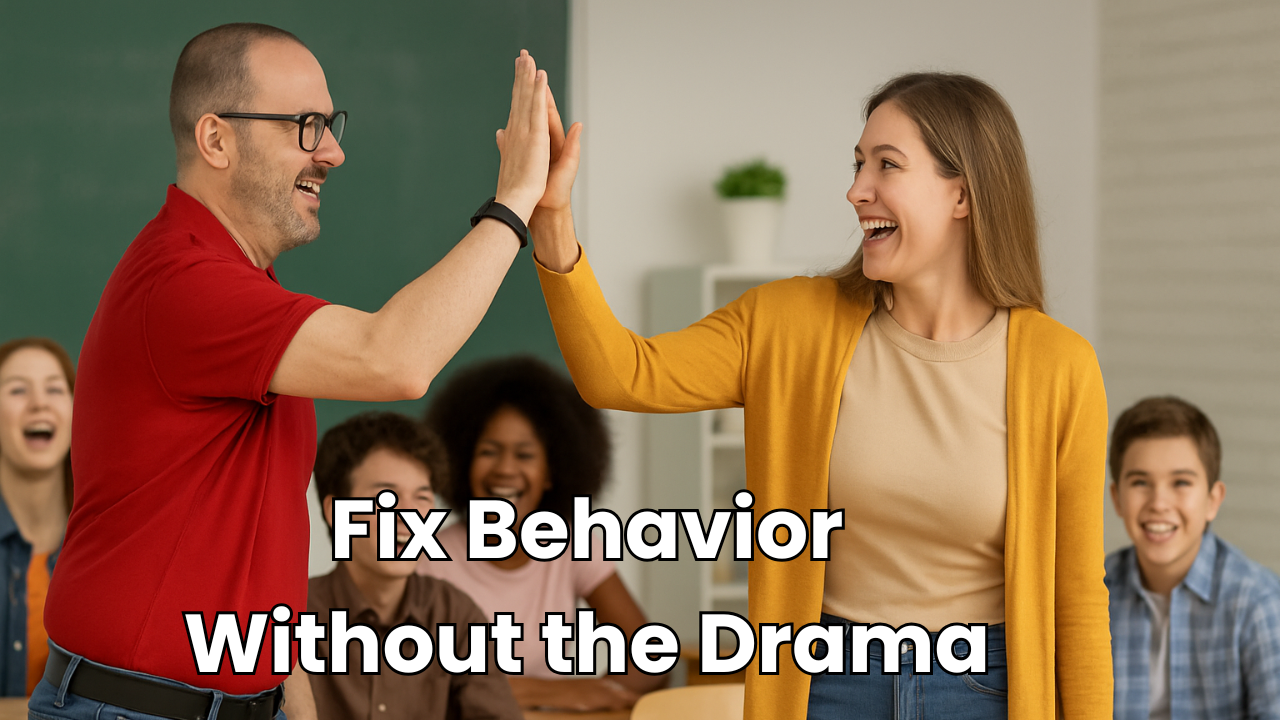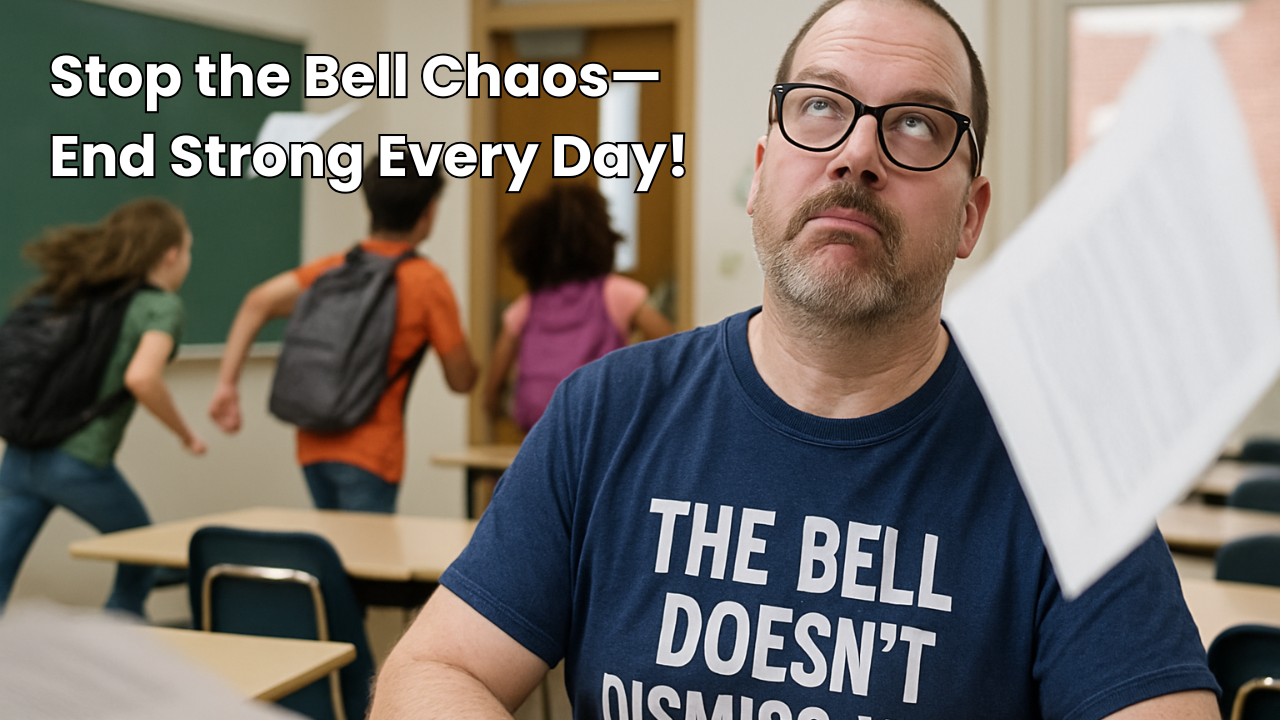
Are your students truly aware of their progress? Do they understand where they stand in their language journey, or do they feel lost, unsure of how to improve? In this article, you'll discover simple, powerful self-assessment tools that can unlock your students' full potential—giving them the confidence to track their growth effectively and the skills to set meaningful learning goals.
We'll explore how to establish easy self-assessment routines, guide students in setting personal learning goals, and use visual tools to foster reflection. Plus, you'll learn how to leverage peer feedback and promote a growth mindset, ensuring your students take charge of their learning with enthusiasm. Let’s dive in!
1. Create a Routine for Regular Self-Assessment
Self-assessment should be part of the fabric of every classroom, a habit that students engage in regularly. When students can reflect on their own progress consistently, they not only become more self-aware but also begin to take ownership of their learning. Here are some easy strategies to create a routine for self-assessment:
End-of-Class Reflection Sheets
One of the simplest ways to incorporate self-assessment is to have students fill out a short reflection sheet at the end of each class. These sheets could include a few quick prompts, such as:
- “Rate your understanding of today’s lesson on a scale of 1-5.”
- “What’s one thing you learned today that you feel confident about?”
- “What’s one thing you still have questions about?”
These reflections take only a few minutes but provide tremendous insight into each student's current understanding. Plus, students begin to make it a habit to evaluate their learning, which is a skill that benefits them in every subject.
Learning Logs
Another effective tool is the learning log, a weekly or bi-weekly journal that students keep to track their progress over time. In these logs, they can summarize what they’ve learned during the week, highlight areas of difficulty, and set a personal goal for improvement. By doing this, students can recognize patterns in their learning—such as concepts they struggle with consistently—and feel a sense of achievement when they see their growth over time.
Traffic Light Cards
Traffic light cards are an interactive, visual way for students to indicate their understanding. Each student receives three colored cards: green, yellow, and red. During or after an activity, students hold up a green card if they understand well, a yellow card if they have some doubts, or a red card if they’re completely lost. This quick and non-verbal self-assessment gives both the teacher and the students an instant overview of comprehension levels in the room and can guide what needs review or further explanation.
These strategies are easy to implement and can significantly enhance students' ability to self-assess, giving them a better grasp of their own learning journey.
2. Guide Students in Setting Personal Learning Goals
Setting personal learning goals is an empowering way for students to take control of their learning. However, students often need guidance to set meaningful, actionable goals. Here are three strategies to help:
SMART Goals Framework
Teaching students to set SMART goals—Specific, Measurable, Achievable, Relevant, and Time-bound—is a fantastic way to help them focus. For instance, instead of setting a vague goal like “get better at Spanish,” encourage them to make it more specific: “Learn 20 new vocabulary words related to food by next Friday and use them in conversation.” This type of goal is clear, achievable, and has a deadline, which motivates students to work consistently towards it.
Weekly Goal-Setting Activities
Incorporate a short segment at the start of each week where students write down their language goals. For example, they might set a goal to “speak only in the target language during partner activities” or “use at least five new vocabulary words during the oral practice.” Having a specific goal for the week keeps them motivated and allows for focused progress.
Mid-Unit Check-ins
Sometimes goals need to be adjusted, and it’s important to give students the chance to recalibrate. Plan a mid-unit check-in where students revisit their initial goals, assess their progress, and modify goals if needed. This might look like adding a new goal if they’ve already achieved their current one or changing an unrealistic goal to something more attainable. This regular check-in helps students reflect and stay on course.
Goal-setting helps students feel motivated and more engaged in the learning process, as they can see tangible improvements based on their efforts.
3. Use Visual and Interactive Tools to Encourage Self-Reflection
Visual aids can make the process of self-assessment more engaging and easier for students to understand. Here are three visual strategies that work wonders in the classroom:
Progress Tracking Charts
Give students a simple progress tracking chart for each skill they’re working on—reading, writing, speaking, and listening. This chart might be a bar graph that they color in as they meet specific milestones (e.g., “I can introduce myself in the target language” or “I can understand a short audio clip about daily routines”). The visual nature of this chart allows students to literally see how far they’ve come, boosting confidence and motivation.
"I Can" Statements
“I Can” statements are another powerful visual tool. These are lists of specific skills written in a way that students can understand, like “I can describe my favorite hobby in Spanish” or “I can ask for directions.” Students go through these statements and mark off the ones they’ve mastered. It’s an easy way for them to evaluate their skills and identify areas for growth.
Digital Portfolios
Have students create a digital portfolio where they upload samples of their work, such as written assignments or audio recordings of their speaking practice. This not only allows them to track their progress over time but also serves as a powerful tool for reflection. Students can look back at their earlier work and see tangible evidence of how much they’ve improved, which is often more motivating than abstract assessments.
Visual and interactive tools make the abstract concept of progress tangible and provide students with a clear sense of direction and accomplishment.
4. Promote Peer Feedback as a Form of Self-Assessment
Peer feedback is an effective way for students to gain insight into their own learning while also learning how to assess others. Here are three peer feedback strategies:
Partner Feedback Sessions
Pair students up to evaluate each other’s work using a simple rubric or checklist. Encourage them to share one strength and one area for improvement. For example, after a speaking activity, students might give feedback on pronunciation, use of vocabulary, or fluency. This kind of feedback not only helps the student receiving it but also enhances the assessor’s understanding of the skills involved.
Gallery Walks with Feedback Notes
Organize a gallery walk where students display their work around the classroom, such as posters or written assignments. Their peers can walk around, read each piece of work, and leave a sticky note with a positive comment or constructive suggestion. This fosters a culture of collaboration, and students often feel more motivated when they know their peers will be seeing their work.
Peer Video Reviews
Ask students to record themselves speaking or presenting, then swap videos with a peer for feedback. Students watch each other’s videos and write down two positive aspects and one area for improvement. This activity encourages them to think critically about language skills and reinforces their own learning through the evaluation of others.
Peer feedback not only supports self-awareness but also creates an environment of collaborative learning, where students learn from each other and develop empathy.
5. Foster a Growth Mindset Through Reflective Questions
A growth mindset can make a world of difference in how students perceive their learning journey. By encouraging students to reflect on their mistakes and successes, they learn that growth is a process. Here are three ways to do that:
Reflective Question Prompts
Use reflective question prompts to get students thinking about their learning process. Questions like, “What was the most challenging part of today’s lesson?” or “What strategy did you use to overcome a difficult task?” help students recognize the effort they put into their learning. By writing down or discussing their responses, they start to see that challenges are opportunities for growth rather than signs of failure.
Mistake Analysis
After a quiz or writing assignment, ask students to do a mistake analysis. They should look at their mistakes, explain why they made those errors, and consider what they could do differently next time. For example, if they forgot the correct conjugation of a verb, they can create a mini-quiz for themselves to practice that verb form. Mistake analysis shifts the focus from grades to understanding, and students begin to see errors as valuable learning tools.
Success Stories
Allow students to share recent successes or breakthroughs, whether big or small, with the class. These can be moments like “I finally understood how to use the past tense correctly!” or “I was able to have a conversation in Spanish without feeling nervous!” Sharing success stories not only builds confidence but also encourages other students to keep striving, as they can see what’s possible through effort.
Encouraging reflection and a growth mindset helps students view their language learning journey as a series of steps, where each challenge is just another opportunity to grow.
Conclusion
By incorporating these self-assessment tools into your language classroom, you can unlock your students' potential in a way that is engaging, simple, and effective. From regular reflection routines to visual tracking tools, from peer feedback to growth mindset techniques, each strategy helps students take charge of their own learning journey. Not only will this lead to increased motivation and confidence, but it will also create a classroom environment where students are actively involved in their own success.
If you’re excited about these ideas and want to dive deeper into transformative strategies for comprehension-based teaching, consider joining the COMPREHENDED! 2025 Conference. Gain access to a wide variety of presenters and sessions that will equip you with all the tools you need to take your teaching to the next level! Register now and be part of a community dedicated to making language learning both effective and fun.
Key Takeaways
- Establish Regular Self-Assessment Routines: Implement simple self-assessment routines, like end-of-class reflection sheets, learning logs, and traffic light cards, to help students consistently evaluate their understanding and take ownership of their learning journey.
- Set Personal Learning Goals: Guide students in setting meaningful learning goals using the SMART framework, weekly goal-setting activities, and mid-unit check-ins, empowering them to take focused action toward their language development.
- Use Visual Tools for Reflection: Incorporate visual aids such as progress tracking charts, "I Can" statements, and digital portfolios to make student progress more tangible and keep them motivated by clearly seeing their improvement over time.
- Leverage Peer Feedback for Deeper Self-Awareness: Use strategies like partner feedback sessions, gallery walks with feedback notes, and peer video reviews to foster a collaborative environment where students learn from one another while gaining insight into their own strengths and areas for growth.
- Promote a Growth Mindset Through Reflection: Encourage students to reflect on their learning by using reflective questions, mistake analysis, and sharing success stories, helping them view challenges as opportunities and cultivate a positive attitude toward their language journey.



